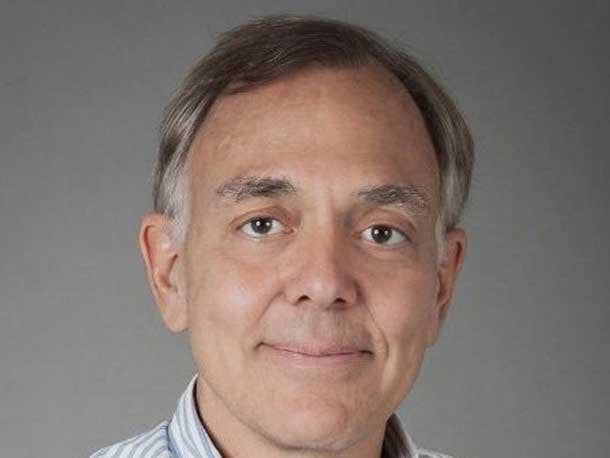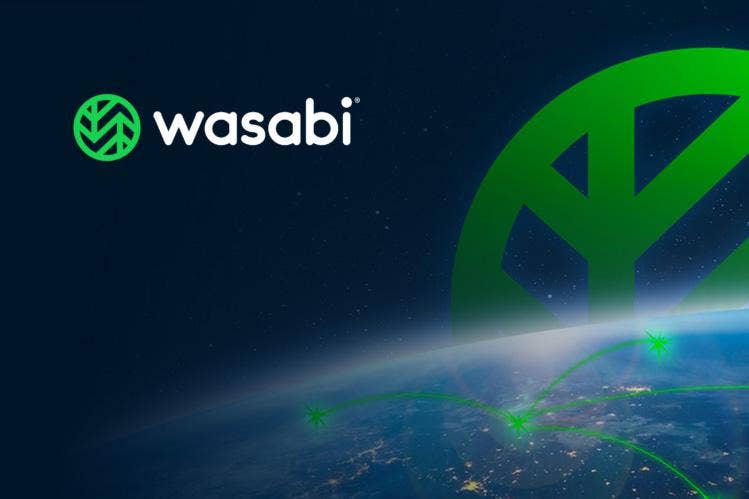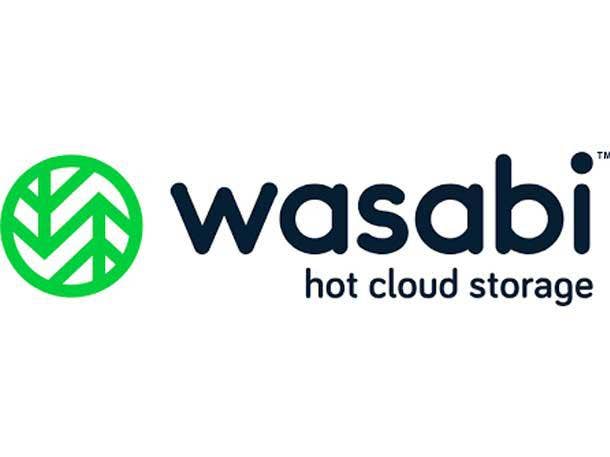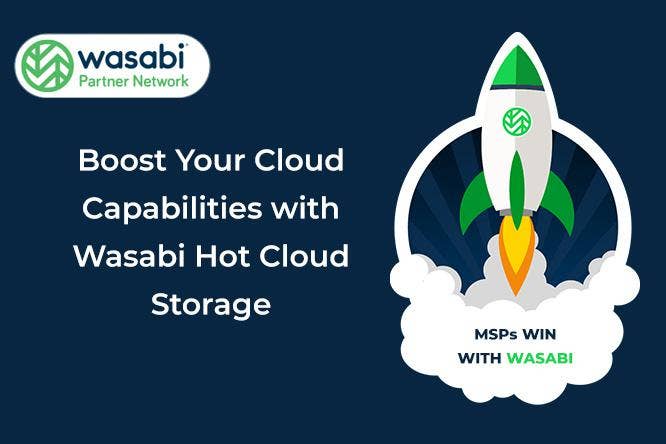Wasabi CEO David Friend: $250M Funding To Double Channel Reach, Fuel Global Expansion
‘We’ve got 13,000 channel partners today. And we’d like to more than double that. And we’re in 13 regions around the world now, including the U.S., Canada, England, France, Germany, Netherlands, Singapore, Australia, Japan, I’m probably forgetting something. But we want to be at somewhere around 25 or 26 regions by this time next year,’ says Wasabi Technologies CEO and co-founder David Friend.

Funding The Future Of Wasabi
Boston-based cloud storage company Wasabi Technologies this week said it has raised an additional $250 million in funding, half of which came from private equity and other institutional investors and half from debt, and said the company now has a valuation of over $1.1 billion.
The new funding represents a big bet on Wasabi, which is using its large channel and alliance partner base to compete against cloud giants like Amazon Web Services by promising to provide cloud storage for about one-fifth the cost of using public cloud providers. But a bet on Wasabi and its serial entrepreneur CEO and Co-founder David Friend is a safe move given how quickly the company has grown and the success Friend and his co-founder partner Jeff Flowers had with their previous venture, cloud storage provider Carbonite, which was acquired in 2019 by OpenText for $1.42 billion.
Friend measures the success of Wasabi in various ways, including having 13,000 channel partners worldwide with plans to double that number over the next year, and alliance relationships with many of the top data protection vendors who make it easy for their channel partners to use Wasabi for back-end cloud storage.
[Related: 2022 Storage 100: Who’s Got Your Backup?]
With this new round of funding, Friend has found a new way to measure success: being able to raise debt.
“Finally, people are taking us seriously enough that we can raise debt as well as equity,” he told CRN. “This is a really important milestone for us because when you have a lot of physical facilities like we have, you really want to finance that stuff with debt. It’s like real estate. When you’re going to put up an apartment building, you don’t do that with equity. You borrow most of it from a bank. And then you use your equity for sales and marketing and R&D, that kind of thing.”
Friend said he expects this to be the last round of funding Wasabi gets. And he also said the company really didn’t need the extra funding, but instead could immediately become a profitable company if it had been satisfied with its current situation.
“The emphasis right now is on top line growth,” he said. “And as long as we’re expanding into all these new markets and building all these data centers and everything else, that’s a cash drain. But the minute you slow the growth down, you can turn profitable. So we’re at that point now where, if we didn’t have access to more investment capital, we would just slow down the growth and we can survive indefinitely.”
Wasabi and its investors are betting on growth. For more on how it hopes to achieve that growth, read on.

How has Wasabi been doing?
We’ve been busy. We’ve opened up six new regions since Christmas. So it’s been one a month since the beginning of the year, and then raising all this money has kept me pretty busy.
So what’s behind the new $250 million in funding?
Finally, people are taking us seriously enough that we can raise debt as well as equity. This is a really important milestone for us because when you have a lot of physical facilities like we have, you really want to finance that stuff with debt. It’s like real estate. When you’re going to put up an apartment building, you don’t do that with equity. You borrow most of it from a bank. And then you use your equity for sales and marketing and R&D, that kind of thing.
How much of that $250 million is equity versus debt?
Half and half. So $125 million of debt, and $125 million of equity. If you include the $125 million debt, that brings the total invested in Wasabi to over $500 million.
What’s the plan for the money?f
We’ve got 13,000 channel partners today. And we’d like to more than double that. And we’re in 13 regions around the world now, including the U.S., Canada, England, France, Germany, Netherlands, Singapore, Australia, Japan, I’m probably forgetting something. But we want to be at somewhere around 25 or 26 regions by this time next year. And the reason for that is, there are so many data sovereignty laws, meaning if you’re in one country, you can’t ship data out of the country in many cases. And so as we try to capture this migration of data from on-prem to the cloud, we need to be where the data is. And if we get to 25 or so regions by next year, that will give us access to roughly 80 percent of the world’s data. So that’s the important milestone, from my perspective.

And when you say setting up another region, you’re talking about purchasing storage capacity and putting it in a co-location facility, right?
Yeah, we usually go into Equinix data centers. That’s where most of our data centers are. We partner with them in a number of different ways. They offer bare metal compute, and that makes a nice pairing with Wasabi storage because they don’t offer storage and we don’t offer compute. So that works nicely together. I don’t remember how many, but the last data centers that we’ve opened have been in Equinix. And so we’ll go in, hire a country manager, hire marketing people, hire salespeople, hire a PR agency, and start developing channels. It’s important for us to try to bring on the best channel partners as quickly as possible because that’s our route to market.
Wasabi’s business model remains channel-only, right?
We have about 13,000 channel partners now. Wasabi has some distributors who will handle certain channel partners. So we do have two tiers of distribution where that makes sense. But the job is basically to get these channel partners to plug Wasabi in anywhere there’s a storage need, instead of selling them a piece of hardware, a NetApp box or whatever. These guys used to make a living selling hardware storage. Now they’re learning to sell cloud storage, and they’re learning that they can make more money selling cloud storage than they could ever make selling hardware. And so they’re transitioning over. So if someone’s selling a new backup system, maybe they’ll sell Veeam software or Commvault software plus Wasabi storage. If they’re selling a surveillance system for a new mall, or selling maybe Milestone [Systems] or Axis [Communications] surveillance, they can sell it with Wasabi. If they’re selling a new MRI machine for a hospital, sell a Philips MRI machine plus Wasabi for the data. That’s the way we’re doing it. We’re just partnering up with all these technology alliance partners that we have, and going into their channels as the storage component for some sale with something else.
When a channel partner who uses Veeam or Commvault data protection software with Wasabi on the backend, does the partner sign a separate contract with Wasabi?
They sign a separate contract with us. There are a few technology alliance partners, probably less than 50, who are embedding Wasabi in their products. So that’s really more OEM. For example, MSP360, which is a very popular SMB backup product, sells it with the storage included, and that storage is Wasabi, but nobody really knows that. It’s just embedded.

How far is Wasabi from being either profitable or cashflow positive?
Well, whenever we decide, at this point. The emphasis right now is on top line growth. And as long as we’re expanding into all these new markets and building all these data centers and everything else, that’s a cash drain. But the minute you slow the growth down, you can turn profitable. So we’re at that point now where, if we didn’t have access to more investment capital, we would just slow down the growth and we can survive indefinitely.
In addition to expanding the current round, do you expect to go for another round of funding?
No. I expect this will be the last round we raise.
Would you want to do an IPO in the near future?
[No comment.]

Previously when we talked, your emphasis on investing was through family offices rather than institutional investors. Is that still the situation?
Well, we’re doing more with institutional investors. The lead investor in this most recent round is an institutional investor, L2 Point Management. L2 Point is a new fund. They’re just on to their first half-dozen or so investments. And there’s a handful of other big institutional investors who are part of this round, including returning investors like Fidelity Management, who is about as big as you can get. But I still like these family offices, these billionaire family offices, because they’re very patient money. They don’t bother you. And they actually know everybody. So if you want an introduction to the CEO of this company or that company, these people are better connected than anybody on the institutional side of things that I’ve found. So I really liked them as investors. And I’m very grateful that I’ve gotten to the point in my career that my reputation is such that these family offices will trust us. [And] we don’t have any VCs [venture capital investors] in Wasabi at all. And that’s kind of deliberate at this point.
With all the relationships and channel partners that Wasabi has built up on the data protection side, are there any thoughts about expanding Wasabi beyond the storage side of the business? Compute, or some other cloud function?
Not, not at this time. We compete with Amazon, Google and Microsoft. And the way you win in that kind of battle is by being laser-focused on doing one thing really, really well. And so we wake up every morning, and all we have to worry about is how to make Wasabi cheaper and faster and more secure. Amazon’s got 300 other products to worry about. And you can’t be best at everything, right? So at this stage, we’re still too small to invest in more than one thing. And the market for storage is just enormous. When you think about the number of zettabytes of data that’s produced in the world, if we had all that stored in Wasabi today, it would be trillions of dollars of revenue. So it’s not like we we’re running out of space in our market. I think Amazon will do somewhere between $25 and $30 billion in storage revenue this year. We’re like a tiny speck on the landscape right now. So we’re just going to stick with that and milk it as far as we can because it’s such a huge market opportunity. And every day, somewhere in the world people are deciding to retire their room full of NetApp or EMC storage servers and move their data to the cloud. And we just want to focus on that.

And what about you? You’ve been doing cloud storage now for well over 20 years. Any thoughts on retiring?
No, I really enjoy what I’m doing. I feel very fortunate to be able to have this creative kind of work. Almost six years ago now, Wasabi was just me and [co-founder] Jeff Flowers sitting at my dining room table. And now we’ve got 250-plus employees and 43,000 customers. So it’s a lot of fun to see that sort of thing happen. And at this point, in my career, I’ve gotten really good at what I do. So I enjoy it. You know, you’re kind of at the top of your game. So I don’t have any interest in retiring. And also, I have Marty Falaro, our chief operating officer, and he runs most of the day to day operations of the business. That way, I can spend my time talking to customers and investors.
And to the press.
And to the press. I really enjoyed doing that. I’m the company’s chief evangelist.